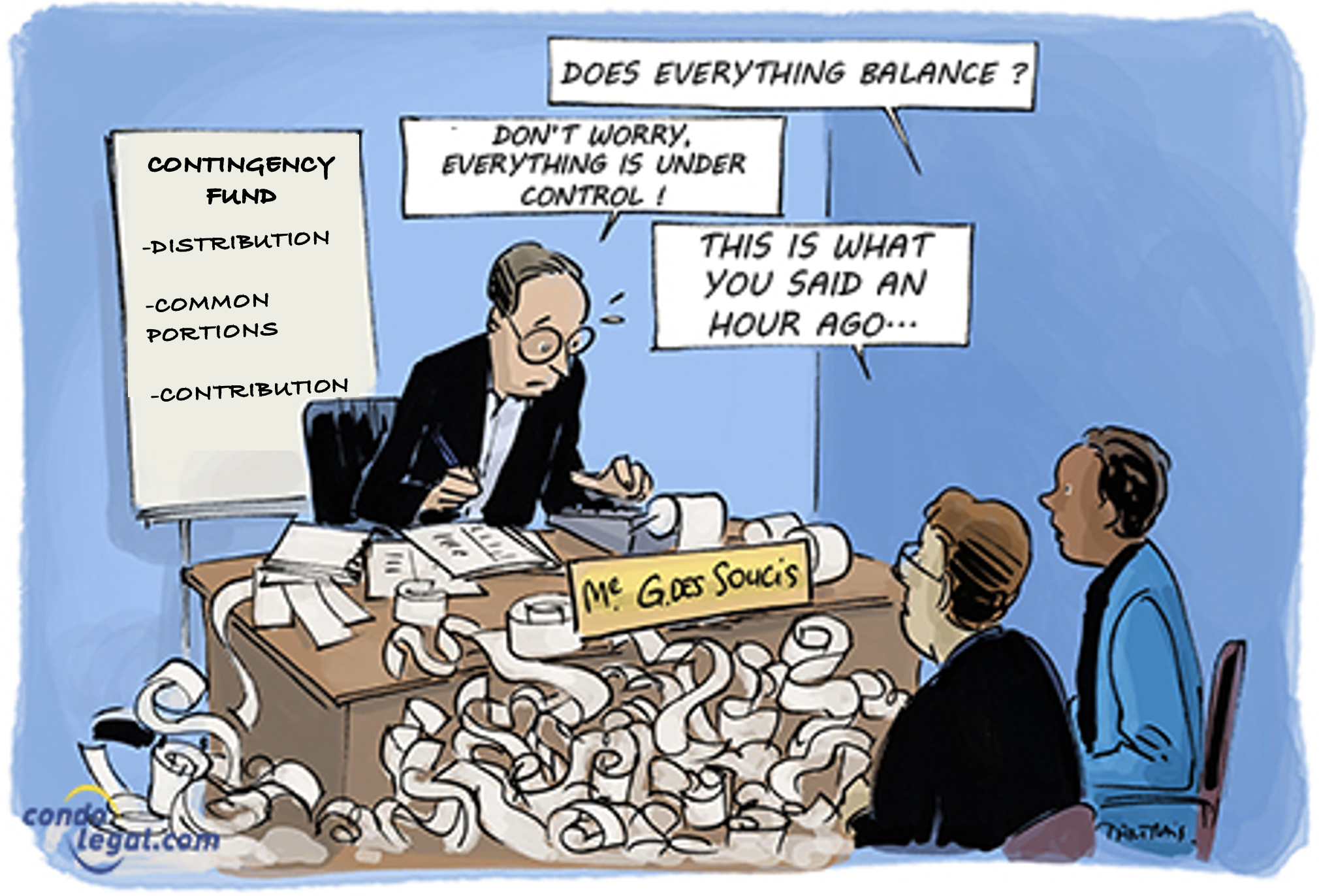 Co-ownerships must set up a contingency fund to finance future work expenses. When it comes to major repairs or the replacement of the common portions, consideration is given to the obligation imposed on the syndicate to preserve the building and its corollary: the constitution of a contingency fund. This fund is funded by a mandatory contribution made by each co-owner to the contingency fund. This will vary depending on the calculation method chosen by the professional selected by the members of the board of directors.
Co-ownerships must set up a contingency fund to finance future work expenses. When it comes to major repairs or the replacement of the common portions, consideration is given to the obligation imposed on the syndicate to preserve the building and its corollary: the constitution of a contingency fund. This fund is funded by a mandatory contribution made by each co-owner to the contingency fund. This will vary depending on the calculation method chosen by the professional selected by the members of the board of directors.
Distribution among the co-owners
For general common portions, each co-owner's contribution to the contingency fund is determined based on the relative value of their fraction. As for common portions for restricted use, article 1064 of the Civil Code of Québec stipulates that the co-owners who use them alone contribute to the costs related to the maintenance and routine repairs of these parts. It is important to note that the term "expenses" refers only to minor repairs and maintenance. That said, this sentence cannot have the effect of making a co-owner liable for the replacement of a restricted-use common portion.
However, the amendment made to section 1064 of the Civil Code of Quebec by Bill 16 weighs this rule. It is expressly provided that the declaration of co-ownership may provide for a different distribution of the contribution of these co-owners, with respect to the costs relating to major repairs and the replacement of these common portions for restricted use. This section states:
Each co-owner contributes to the common expenses in proportion to the relative value of his fraction. However, only co-owners who have the use of common portions for restricted use contribute to the expenses related to the maintenance and the ordinary repairs of those portions.
The declaration of co-ownership may determine a different apportionment of the co-owners’ contribution to the expenses for major repairs to common portions for restricted use and for the replacement of those portions.
Thus, under the second paragraph of that section, it is possible that the declaration of co-ownership may impose on the co-owners, who have exclusive use of a common portion, the costs relating to major repairs and replacement of the common portions. However, if the declaration of co-ownership is silent, these expenses must be borne by all co-owners, in proportion to the relative value of their fraction.
Management of co-owners' contributions to the contingency fund
As part of its management of the contingency fund, a syndicate may collect two types of contributions from co-owners, namely those relating to non-restricted common portions (general common portions) and those for restricted use. Such a particularization of the co-owners' contributions to the contingency fund does not result in the creation of two contingency funds for a co-ownership. In this regard, as the Court of Appeal noted in Syndicat des copropriétaires de Verrières I c. Bombardier, the only option remains is not to create more than one contingency fund, but to take into account the respective rights of the co-owners over the restricted-use common elements in determining the contribution to the contingency fund.
Distribution of Amounts Accumulated in the Contingency Fund Between a Seller and a Buyer
Although the seller may by agreement require the buyer to reimburse a share of the sums accumulated in the contingency fund, this is not a negotiation element during a sale, because in general, it is provided in the offer to purchase that there is no distribution of the sums accumulated in the contingency fund. In addition, article 1071 of the Civil Code of Quebec provides that the amounts paid into the contingency fund remain the property of the syndicate. Any contribution made is therefore not repayable by the syndicate, because the money accumulated over time will be used to ensure the sustainability of the co-ownership.
As a user-pays during their stay in the building, a co-owner is responsible for the costs related to the wear and tear of the building. After his departure, his contributions will be used to finance future work to be carried out in the common portions. It is not fair for future generations of buyers to pay the price, because of precedents that have been careless.
 WHAT YOU SHOULD KNOW ! Only one contingency fund should be set up per divided co-ownership. However, as provided for in article 1064 of the Civil Code of Quebec, it may be subdivided to take into account, in determining the contribution to the contingency fund, the respective rights of the co-owners over the restricted-use common portions.
WHAT YOU SHOULD KNOW ! Only one contingency fund should be set up per divided co-ownership. However, as provided for in article 1064 of the Civil Code of Quebec, it may be subdivided to take into account, in determining the contribution to the contingency fund, the respective rights of the co-owners over the restricted-use common portions.
 WHAT TO KEEP IN MIND: Article 1064 of the Civil Code of Québec states that co-owners who use the restricted common portions are the only ones to contribute to the resulting expenses. The courts have ruled on the interpretation of the term "encumbrance" on a number of occasions. Thus, it does not include, except as otherwise provided in the declaration of co-ownership, the charges associated with the cost of major repairs and replacement of the restricted-use common portions.
WHAT TO KEEP IN MIND: Article 1064 of the Civil Code of Québec states that co-owners who use the restricted common portions are the only ones to contribute to the resulting expenses. The courts have ruled on the interpretation of the term "encumbrance" on a number of occasions. Thus, it does not include, except as otherwise provided in the declaration of co-ownership, the charges associated with the cost of major repairs and replacement of the restricted-use common portions.
 WARNING ! The contingency fund of a co-ownership is very often insufficient, due to the minimal contributions of the co-owners and/or because of inappropriate use by the directors, whether through ignorance or negligence.
WARNING ! The contingency fund of a co-ownership is very often insufficient, due to the minimal contributions of the co-owners and/or because of inappropriate use by the directors, whether through ignorance or negligence.

